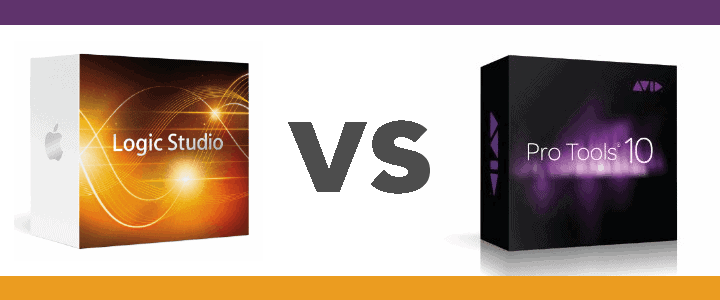
Making your own music has never been more accessible. People of all ages are setting up home studios and discovering how easy it is to use a computer and a little basic recording gear to make high-quality music they can proudly share. Entry-level software programs like Garage Band and Fruity Loops can produce amazing results, but you can also quickly move up a level or two and be working with the same music production programs that you find in the top studios worldwide.
Of those, there is an endless debate between the two major programs, Pro Tools or Logic? It can be compared to Nike vs. Reebok or Coke vs. Pepsi. Digidesign first launched Pro Tools in 1991. By 1997, this Digital Audio Workstation software had become the industry standard for audio recording, mixing and mastering. Logic is a software created originally by a company called Emagic. In 2002, Apple acquired Emagic. In 2004, they released Logic Pro 6 which launched it to the forefront of the digital audio world.
If you compare the two, they both have unique properties but similar functions. Pro Tools is known for its user friendly audio editing & compatibility. Logic is infamous for having a plethora of software instruments and effects that come stock with the program.
Logic is labeled as more of a producer and composers program. It has a simple, yet highly functional look that is very similar to other Apple products. With all of the instruments that come with the program, as well as many available additions, Logic comes equipped for you to fully compose, produce and record audio in the same session. It’s a very self-contained program, as you don’t have to purchase any extra hardware to begin working. There is a natural upgrade path from Garage Band, as the programs work in similar ways, and Logic can read Garage Band files.
Pro Tools is renowned for its audio recording and editing ability. In the past, users have needed special interfaces that only work with the program. When Pro Tools 9 was released, this changed and the program is now able to use most commonly available audio interfaces to communicate between instruments, microphones and the software. Pro Tools is more of an industry standard program, as you’re going to find it in 95% of major recording studios. The audio editing functions in Pro Tools are very user friendly, as it doesn’t take much to fully track & edit as many vocal tracks as your system can handle. It’s a very flexible program, with multiple versions available to suit your studio needs whether it be in your bedroom or in a professional recording studio. The price of Pro Tools is higher than Logic, but its expansion and compatibility options are more robust.
For me, I use Pro Tools because I am so familiar with the key commands and my own personal system I have developed over time. On the contrary, I’ve seen an engineer use Logic to fully mix and master an 84 track Rock composition that would trump any attempt of mine to mix the same song. I could make a long list of pros and cons between the two programs, but it really comes down to preference. It doesn’t necessarily matter what you have, it’s all about how you use it.







